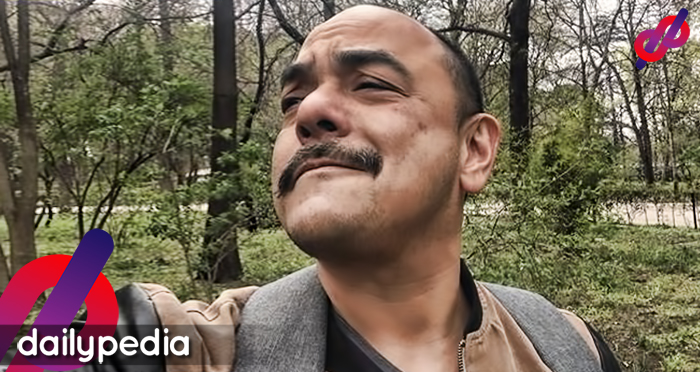- Activist Carlos Celdran shared on Instagram how he spends his day living in Spain and being away from the political turmoil in the Philippines.
- Celdran became known to the public for his ‘Damaso’ protest which convicted him of blasphemy charges.
- Celdran admits he didn’t want to leave Manila, but he needed to ditch the ‘toxins’ in his milieu.
Carlos Celdran, a man of many talents: visual artist, performance artist, writer, and activist known for his “Damaso” protest shared a life update on what is it like living in Madrid for two months.
The renowned tour guide has migrated to Spain in January. He left the country due to an aggressive political climate and human rights reasons.

He wrote: “It’s been two months since I moved to Madrid and in that time I lost 10 pounds, regulated my blood pressure to a regular 120/80 and achieved a consistent schedule. Mornings are for learning Spanish and noon for museum or park visits. It’s followed by cooking a late lunch, sleeping siesta, while evenings are for studio time and diversions. I’ve also found an apartment, found two volunteer jobs, set up an art studio, joined a gym, met lots of cool Madrileños and made more than a few friends. No traffic, no stress, no trolls, no haters – in both political and art arenas, no political divisions and no white sugar.”
Celdran was put on the spotlight and the public’s attention when his one-man protest about the Catholic Church‘s efforts to prevent Filipinos from accessing birth control has led to his arrest on blasphemy charges.
It was September 30, 2010, when Celdran arrived outside the grand Manila Cathedral dressed as Jose Rizal, carrying a sign reading “DAMASO”, a clear reference to the nefarious character from Rizal’s novel Noli Me Tángere. In the said novel, Father Damaso is an arrogant and conniving Spanish friar who raped the female protagonist’s mother.
https://www.instagram.com/p/Bu63RJHAmeC/?utm_source=ig_web_copy_link
His protest was supposed to be entirely different to what happened back in 2010 though. He originally wanted to be dressed as Father Damaso and only have his picture taken outside the cathedral. The day before the protest, the costume he was going to rent out got caught in a flood and posing Jose Rizal was his second option. Come the day of demonstration, instead of staying outside for the photograph, it started to rain so he ran inside the cathedral.
And the rest, as they say, was history when he found himself in the middle of an ecumenical meeting between Catholic clergy and Protestant bishops.
In January 2011, the Manila Metropolitan Court found Celdran guilty of “offending religious feelings” under Article 133 of the penal code, the only man being convicted of this law in the country since the Philippines declared independence from the United States in 1946.
After incarceration and a two-year trial, the Supreme Court upheld the decision of the Court of Appeals which made the activist face imprisonment for 2 months and 21 days at minimum, and 1 year, 1 month, and 11 days as maximum last year.
“The entire penal code and Constitution need an enema!” Celdran once said in an interview with Vice. “Going into Manila Cathedral with all the bishops there, dressed as Jose Rizal, and using the word ‘Damaso’ in relation to the RH Bill—it was a perfect storm for… an idea!
https://www.instagram.com/p/BvMHcaEAnsH/
“I didn’t want to leave Manila, but I must admit the decision to ditch all of the toxins created by the times we live in is the best thing I’ve ever done. #muchisimasgracias Lolo Pedro for the gift of legal Spanish residency/possible citizenship and for saving my sanity and perhaps even my life. I know you passed on in 1944, but through my dad and my new country, I can still feel your concern and affection until today. Seriously,” continued Celdran on his Instragram post.
For 17 years, he popularized walking tours like “If These Walls Could Talk” and “Livin’ la Vida Imelda” where historical narratives fused with video art and immersive theater to enlighten spectators about Manila’s history between the 14th century until World War II.



